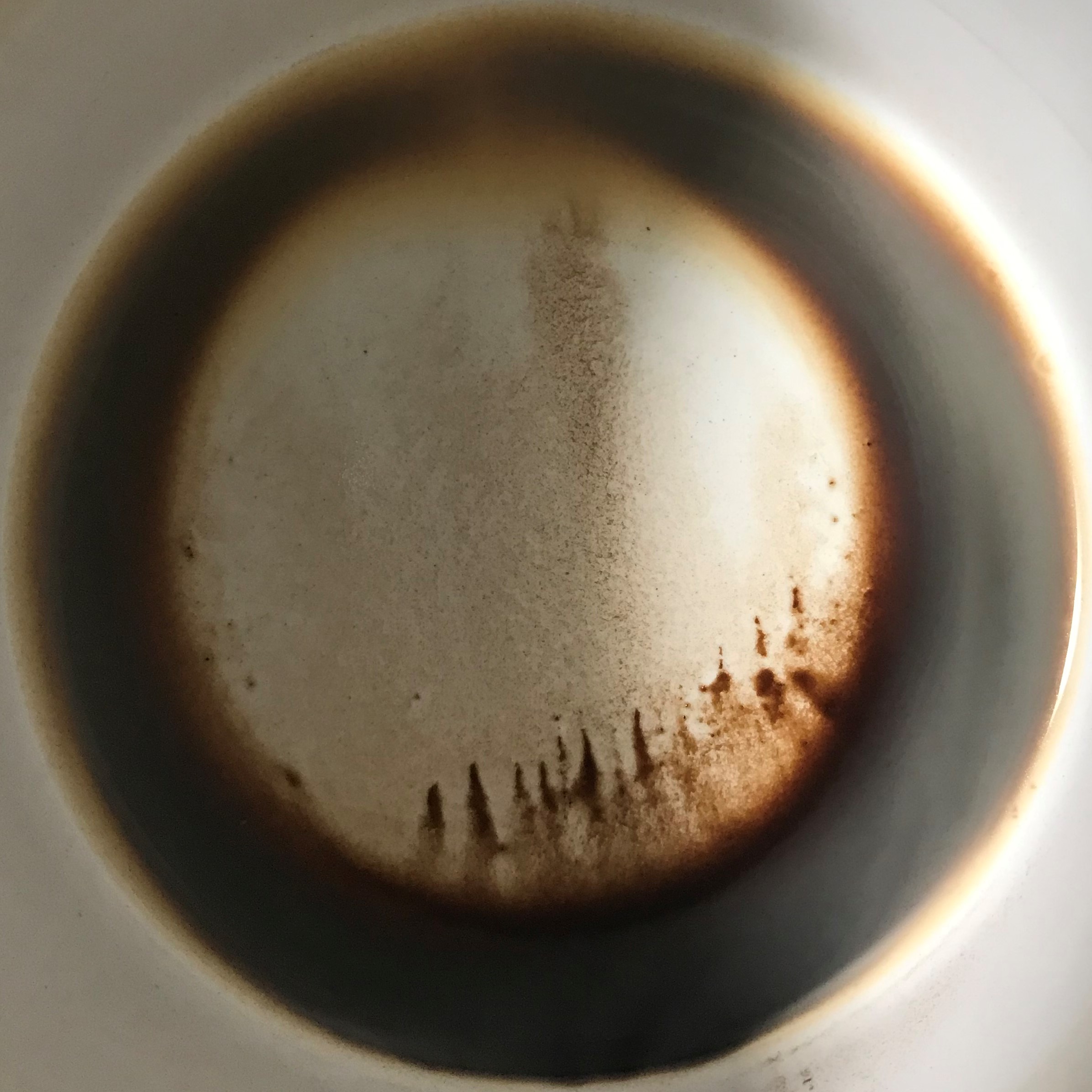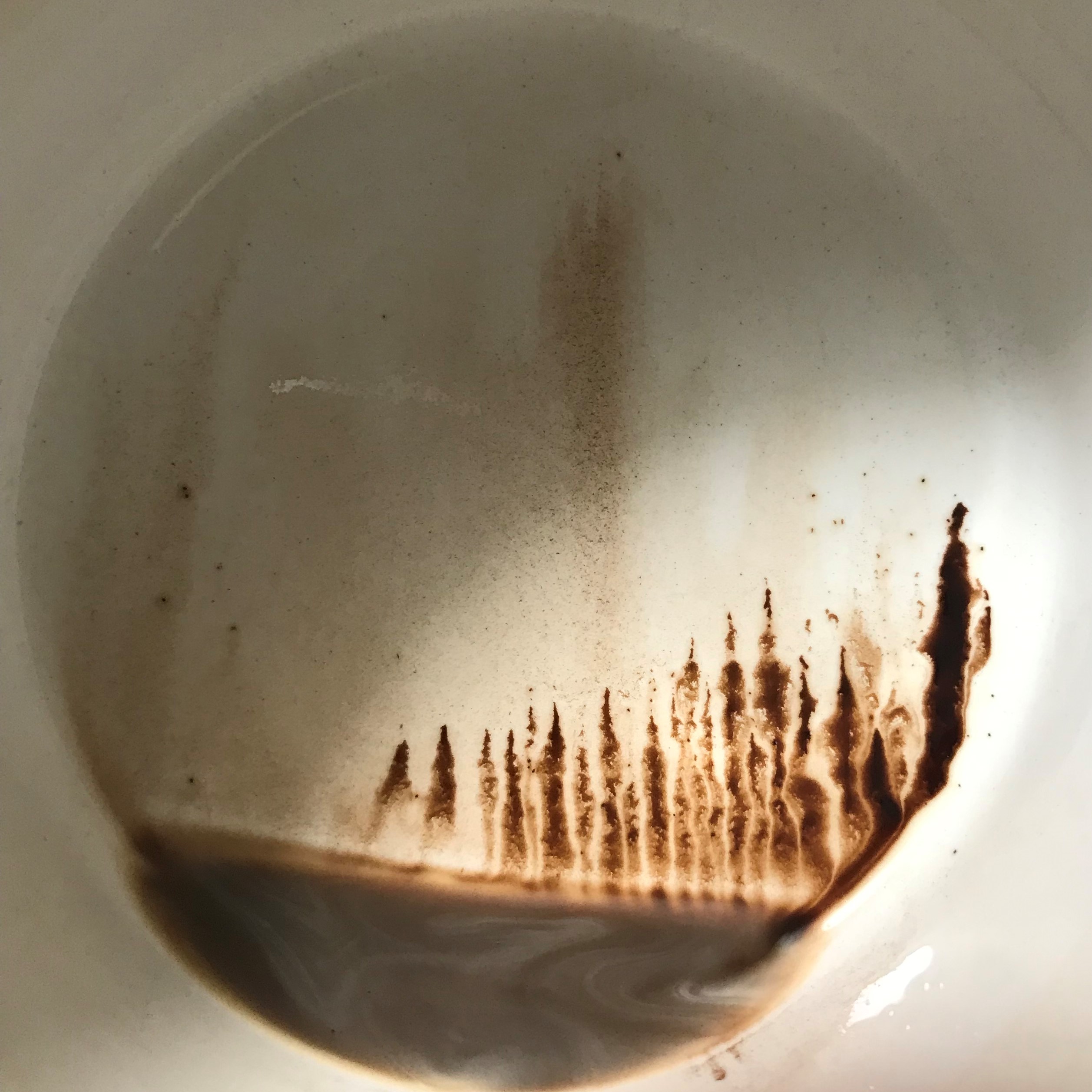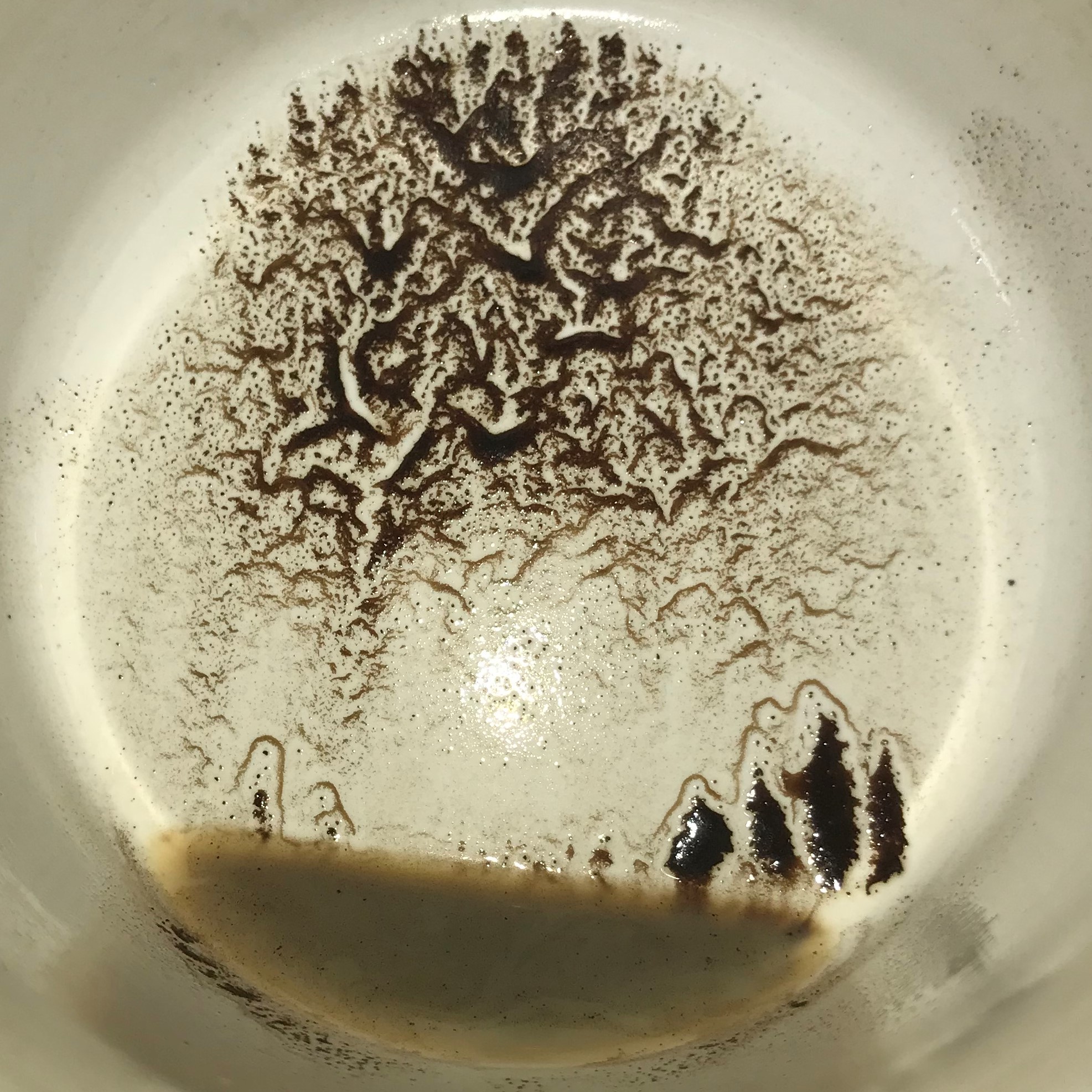My apartment is the perfect writer’s nook. 100 years old. Exactly the right size for one person and a cat. Windows on three sides, natural light. Vintage charm. Excellent landlords. Awesome view of the state capitol. There is only one downside: no balcony or garden space.
Almost six years ago, I moved from a house with a vegetable garden and roses my roommate’s grandfather planted some fifty years ago. I’d often gather tomatoes for a sauce or margarita pizza. I grew violas from seeds and had to put up wire to keep the rabbits from treating them like a salad bar. I had a patch of cosmos that grew to be over six feet high and attracted bees. I fondly remember the wild garlic I found on the side of the house. I loved having living things within sight, within reach. So it was inevitable that I’d fill my new home with plants.
Over the years I’ve acquired and rescued a large brood of plants: a giant peace lily (now deceased), a croton, three oxalis (two green, one purple), 2 pilea (one grew from the other), a dracaena (which lives at work), many pieces of tradescantia (wandering jew), a pothos, two orchids, one little jade, four spider plants (grown from babies), three begonias, several aloes and some herbs (mint, rosemary, basil).
A vital part of self-care is engaging in activities that let you rest the parts of your brain you use constantly – for me: the writing, world-building, language part. My paper crafts fall into this category, as does sketching or cooking from an involved recipe, knitting or crocheting, or even housework. Pet-care and plant-care is no exception. It’s a long-term practice that helps me step outside of my immediate anxieties and focus on the well-being of another organism.
Light
🌞
My apartment is on the end of the complex, and I have windows on three sides – east, north and west. I often marvel at how one extra north-facing window can make such a difference for the whole place. The “ideal” light conditions for houseplants are generally east or south south windows. I once made the mistake of placing light-hungry plants near the eastern windows, even though the building next door blocks most of the light. 🤦🏼♀️
I learned some plants need bright but indirect light, meaning they could be a few feet from the western and northern windows. The oxalis love the western window. They’ve been blooming like crazy for over a year. The pothos lives in the dark bathroom. Most of the other plants are happy in the middle of the living room, bathed in indirect light.
Water
💧
If you ever lament your plant failures, know that I killed an air plant when I forgot to give it its once-weekly bath.
Watering can be a challenge. Over and under, I’ve erred both ways. Research turned me to the practice of watering a dry plant till water drips out the bottom and letting it drain in the sink. I started paying attention to which plants need drier conditions (begonia), can’t stand sitting in water (pilea), love Wet (peace lily), or would prefer a desert (aloe and jade, classic succulents).
Basic rule of thumb for most plants: test the soil with your finger – at least an inch, up to the first knuckle. If it’s still wet, don’t water it. If it’s dry, give it a drink. The time frame can vary depending on the season and the plants’ needs as individuals. I’ve settled into a routine of giving smaller plants 1/3 to a 1/2 cup, medium plants 1 cup, large plants 2 cups about once a week in the summer and every ten days in the winter (earlier as needed). When it doubt test the soil.
The apartment’s particular dry and yet drafty climate might be the reason for the ultimate demise of three schefflera (umbrella) plants and ivies. I’ve also learned many a lesson on root-rot. Those bugs that look like fruit flies aren’t. Ivy and schefflera are also prone to spider-mites, which have the same effect. I’m not brave enough yet to give these plants another try.
Love
❤️
Do your research, internet or library. It’s easier than easy. Learn its name, where in the world it originated, its native climate, its cousins. Trim its dead leaves or tips. Give it fertilizer once every spring (old, deluded coffee will do) and a pretty (well-draining) pot. Dust off its leaves. Poke holes in the soil for aeration.
Plants do communicate. They also respond to the vibrations of human speech. I tend to process my thoughts verbally and at the cat, and I’m certain the plants like it. Sometimes I talk to them, “Need some water, oxalis?” or “Look at your baby, pilea!” or “Still with us, orchid?”
How to tell when your plant is thriving? It will get bigger, grow new leaves or bud. It might outgrow its pot. Plants seem tricky because we can’t “see” it digging its roots deeper or hear it’s appreciation. Their speech is subtle. They grow over time.
They won’t purify the air (contrary to popular belief – you’d need your own jungle for that), but they will nourish your spirit. They will reconnect you to nature. They won’t scamper around, but they will listen to you. They won’t get sick on the rug. They won’t scratch your furniture. Plants are like low maintenance pets. If you pay attention, they have their own personalities. I’d argue they’re better “pets” than a fish.
Lessons Learned
🌱
Cat Mischief. Don’t underestimate them. The only plants Beatrix chews on are the spider plants and occasionally a pilea. Both are thankfully non-toxic. I don’t take chances with the others. The late peace lily, croton, and pothos pose the most risk to kitties, so they are out of her reach. The oxalis and the tradescantia are supposed to be mildly toxic, but she’s shown little interest in them.
Overwatering doomed several plants. My peace lily was several years old, very big. It survived the deluge but never got better. I kill every African violet I bring home. I have only one jade left after root rot claimed the others. These are lessons learned.
The key is not giving up, declaring all your thumbs hopelessly black, avoiding the floral section of the grocery store. You have to find what works for you. You have to keep trying. Seeing them thrive (finally, in some cases) is a joy.
Aloe Vera

The Mother. 
Aloe babies – Aloe barbadensis (Barbados aloe)
Aloe vera thrives on neglect. Water no more than once a month. Indirect light – doesn’t need to be too bright. Its pulp is soothing for burns.
My aloes were rescued from the days of the Terminal Building fire. It thrived in the moderate light of the lobby until it ran out of room. I took it home, disassembled it and discovered three adult plants and a brood of pups. Automatic Christmas gifts!
Aloe, I’ve learned recently, is an “old world” plant, native to southern Europe. The Romans loved this stuff. Inevitably, it made its way to America, which had a similar desert plant: the agave.
Begonia

I’ve received a few slips of begonia from my dear friend and downstairs neighbor, Trudy. I’ve had to cut them down and re-root them a few times because they were just too happy. This particular variety grows to be tall, so it might be an exercise in futility. Most of those slips are still alive, and I’m patiently waiting for more blooms like those above.
Oxalis

Purple Oxalis (oxalis triangularis) is living the good life! 
Green Oxalis (oxalis triangularis) is at least 6 years old.
I have green and purple oxalis plants, related to wood sorrels. All three are several years old. The youngest is about to go into a dormant period, which means it looks like its dying. (It’s not.) These are often sold as “shamrock” plants around St. Patrick’s Day, although they are not actual shamrocks (sometimes called “false shamrocks”). These puppies are hearty, and if they’re happy, they will bloom like crazy. Their leaves open to face the sun and close up at night like little umbrellas. Purple loves the western exposure, while the greens are tucked a little further back. They get water once a week.
The old green oxalis was regrown from a bulb that looked dead. I forgot about it, reused the soil and was overjoyed to see it resurrect itself. Oxalis bulbs look like little squat carrots, which are evidently edible. The flowers are little white or pale-purple trumpets.
Spider Plant

Look at this monster! Chlorophytum Comosum. 
Spiderettes!
We had spider plants when I was little. I remember thinking they looked like big blades of grass. They’re hearty. They’re hard to kill. They, too, thrive on neglect. They add a nice organic feature to any decorating scheme: unstyled wildness in a pot.
My biggest spider plant was happy in the north window, another is in the west window. Three out of four are nurturing cascades of spiderettes. When they’re thirsty, the green in their leaves will fade. They’ll perk right up with a drink. And, again, if Beatrix is going to nibble on a plant, I’m glad it’s these. They don’t seem to mind.
Pilea

Pilea peperomioides. Mother. 
Baby 1. 
Baby 2.
Once in a while, a pilea will appear at Trader Joe’s and then vanish for months at a time. They’re often called Chinese money plants, but I prefer its scientific name. It’s quirky, pretty and easy to care for.
They’re known as the friendship plant because it will produce a baby that can be passed onto a friend. The only downside is that the babies don’t grow super fast. It’s a like a good friendship, growing roots slowly but steadily over time. Cut a baby from the mother plant too soon (before it’s root system is developed), and it won’t survive. I usually wait until the baby is at least 1/3 to 1/2 the size of the mom to cut it loose. Above is my pilea family. I freed the middle and right plants from their mother recently. Now the middle baby is huge and having its own babies!
Jade

Jade or crassula argentea. 
Jade, top view.
My last surviving jade. I’m erring on the side of underwatering, never a bad idea where succulents are concerned. Root rot is gross, and there is no cure. This survivor has fat leaves (where it keeps its water) and is bright green. It’s a little floppy yet, so the pencils keep it upright. These two pieces were started from cuttings a friend gave me.
Pothos

Pothos is often mistaken for its close friend the philodendron. Pothos has smaller leaves; philodendron leaves have a more dramatic shape. This plant is also a fire rescue – it lived in my coworker’s area for years and now loves my not-too-bright bathroom. It’s easy to propagate with cuttings. It can either be rooted in water and planted, or it can live in plain water – vase, wine bottle, whatever you have lying around. Again easy to care for, hard to kill and a nice feature to an otherwise mediocre space.
Croton

My croton – codiaeum variegatum pictum. 
Photo by Annie Spratt
You usually see croton plants with bright orange or pink stripes (right). My croton (left) would need to bathe in direct sunlight to get its colors back, but it is too big for a window and needs to be out of Beatrix’s reach. Therefore it lives on top of the bookcase.
It was a rescue from someone at work who was poised to throw it out. It was living in about 1 inch of soil in a plastic bag in a decorative basket. Probably an office gift that had never seen proper care. I was determined to give it every chance at life.
Croton is usually the plant I don’t have to worry about. It doesn’t complain. It will droop when it’s thirsty. But repot it, and it will panic and drop all of its leaves in protest.
Tradescantia

Tradescantia fluminensis. Often called wandering jew. 
The underside is deep purple.
Tradescantia is actually many plants – individual stems rooting independent of each other. Like the pothos, they’ll thrive in vase of water just as easily as soil. They’re the perfect hanging plant – vines of green and purple leaves give off a slight shimmer. Too long in direct sun and it will draw its leaves inward. The whole plant will turn purple, as if in pain. Another lesson learned.
Once every year or so, they’ll get extremely leggy and unhealthy-looking, so they require a trim. I cut them a few (no more than five or six) “nodes” from the head and a quick reintroduction to the soil. They’ll grow again as if nothing happened. I’m sure if they were let loose in a garden, they’ll take over.
All of my tradescantia pieces were rescued from the Terminal building. As was the case with most of my rescues, the plants’ owners never came forward, so I took in all the orphans. This year, they will be Christmas gifts, too.
Orchid

She’s the plant with the prissiest reputation. I have two. Both are 1-2 years old and haven’t bloomed since they were first brought home. These are the three ice cubes per week variety. It’s not set in soil but in a container with special moss and wood chips. Even if it’s not blooming, it will show its appreciation for life by growing new leaves. I believe this particular plant is a phalaenopsis amabilis, a white moth orchid.
Lemon Button Fern

I learned recently that this delicate-looking but resilient fern is non-toxic to cats. It lives at work because it appreciates the moderate light, but I’d love to have one for the apartment. I was nervous about this one at first because – you guessed it – I killed a Boston fern once. As it turns out, this little one is easier to care for and has no complaints. And it’s so cute!
Dracaena

Dracaena and I have a history. I took it work in December 2017 to decorate my new (short-lived) office. It was 15℉ that morning. I thought a scarf would be enough to keep it warm on a thirty minute walk. I was, of course, wrong. The tips of its leaves froze and turned brown, and it has since sported a ragged, chewed-up look. But it keeps thriving. It has grown bigger and will someday look more like a full-grown palm tree. I never have to worry about this guy. It likes the lower light of the new lobby. It appreciates a moderate drink once a week. And it looks happy. It is well on its way to getting taller.
I’ll leave you with one thought. You do not have a black thumb. It’s all a matter of practice and experience. Start with something small and easy, but don’t resign yourself to a lifetime of fake plants (unless you want to). You deserve an indoor garden, too.
※







I love the idea of having plants but I have killed so many plants. I even killed a cactus. I would love a garden in the yard and most of all a herb garden. I tried doing one on the windowsill…Basil, mint, and green onion. I have green onion only. You are very encouraging though. Maybe I should try again…
It’s always worth a try! The trouble with herbs – grown in a window or in the yard – is that they have such different needs. Some like tons of light. Some live heat. I gave up trying to grow them from seed (indoors) bc conditions never seemed right.
Oh, and I’d definitely kill a cactus too! I don’t have a good track record for succulents. 😢 But definitely go for a spider plant or a pothos if you’re looking for something easy.